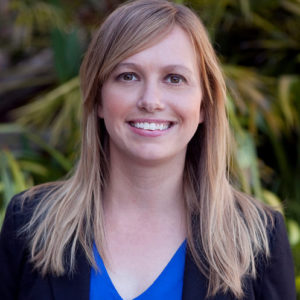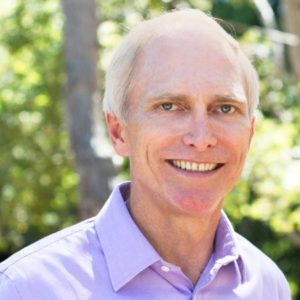Seed Capital
1Mby1M Virtual Accelerator Investor Forum: With Christina Brodbeck of Rivet Ventures (Part 1)

Responding to a popular request, we are now sharing transcripts of our investor podcast interviews in this new series. The following interview with Christina Brodbeck of Rivet Ventures was recorded in March 2018.
Christina Brodbeck, Founding Partner at Rivet Ventures, talks about the firm’s investment thesis of funding companies that target the female demographic in its purchase decision cycle. Very interesting and under-served market.
Sramana Mitra: Why don’t we start by having you introduce yourself a little bit and what your background is? Then we’ll dive into Rivet Ventures. >>>
1Mby1M Virtual Accelerator Investor Forum: With Amos Ben-Meir at Sand Hill Angels (Part 1)

Responding to a popular request, we are now sharing transcripts of our investor podcast interviews in this new series. The following interview with Amos Ben-Meir of Sand Hill Angels was recorded in February 2018.
Amos Ben-Meir, Investor and Board Director at Sand Hill Angels, is a veteran angel investor. You will hear lots of details on working with a prominent angel group, as well as other types of syndicates.
Sramana Mitra: I think what we should start with is having you introduce yourself a little bit to our audience your history with startup investing. You’ve been around for a long time. What does the industry look like from your >>>
1Mby1M Virtual Accelerator Investor Forum: With Gary Little of Canvas Ventures (Part 1)

Responding to a popular request, we are now sharing transcripts of our investor podcast interviews in this new series. The following interview with Gary Little of Canvas Ventures was recorded in March 2018.
Gary Little, Co-founder at Canvas Ventures, discusses the various types of venture capital and the evolution of the industry into a rather segmented current eco-system. For an entrepreneur trying to raise money, all this is extremely complicated, but essential to understand, or else, you will find yourself trying to fit a round peg into a square hole.
Sramana Mitra: I think what would be great for our audience is to hear about a bit of your backstory before Canvas >>>
1Mby1M Virtual Accelerator Investor Forum: With Rami Elkhatib of Acero Capital (Part 5)
Sramana Mitra: How do you process unicorn mania? Are you chasing unicorns?
Rami Elkhatib: No, not really. Our entry point is either the Series A or Series B. In a Series B scenario, we come in and lead a Series B only if there is a situation where a company has awesome technology but is pivoting or changing its geography. We’re coming in at early-stage valuations. For us, unicorn-type valuations are something that don’t really affect us in terms of our entry into our investment. If any of our companies grow to a point where somebody wants to invest at a unicorn valuation, we’ll welcome that opportunity.
Sramana Mitra: Part of the problem that we see in the unicorn trend is that a lot of companies are getting artificially bloated >>>
1Mby1M Virtual Accelerator Investor Forum: With Mark Hasebroock at Dundee Venture Capital (Part 4)
Sramana Mitra: What is the geographical distribution of these six companies that you have exited?
Mark Hasebroock: They’re all in the Midwest – from Texas to Kansas City and between the mountains.
Sramana Mitra: Have you sold anything from Omaha?
Mark Hasebroock: No, we haven’t.
Sramana Mitra: It’s interesting. I’ve known for a long time Greg Gianforte who ran for the Governor of Montana. His big hit >>>
1Mby1M Virtual Accelerator Investor Forum: With Alan Chiu at XSeed (Part 4)
Sramana Mitra: The question that I’m constantly intrigued by as I talk to many investors is that how can so many investors find unicorns. It’s just not mathematically viable if you’re obsessed with just investing in companies that have the potential of being unicorns. There aren’t that many of those.
Alan Chiu: That’s very true. That said, we’re seeing companies go international earlier in their life than perhaps previous generations of companies. While the absolute size of these markets are growing at the pace of GDPs, the ability for startups to reach these markets have increased over time. Growth has a direct correlation with valuation. That helps to create more highly-valued companies. That’s still rare. >>>
1Mby1M Virtual Accelerator Investor Forum: With Rami Elkhatib of Acero Capital (Part 4)
Sramana Mitra: What trends do you see? If you look back on the 2017 calendar year, what have you seen in your deal flow that you can synthesize as key trends?
Rami Elkhatib: I’ll answer this in two parts. As we are focused on enterprise software, we look at trends that have been persistent for five years and beyond. Since we began investing this fund, the combination of mobile, cloud, and data has completely reconfigured the enterprise IT market. That’s something that has persisted for a long time and will continue to persist for a long time. There is this side of the trends where there’s a lot of continuity in the enterprise market.
One day, something else will come along and reshape the landscape. We’re always trying to be on the lookout for that. Then within that, there are >>>
1Mby1M Virtual Accelerator Investor Forum: With Mark Hasebroock at Dundee Venture Capital (Part 3)
Sramana Mitra: At what stage did you encounter AddStructure and how did you encounter them?
Mark Hasebroock: We have an office in Chicago and I have a partner there. David is very plugged into what’s happening in Chicago. He heard about this at an event that he was at. He realized that it was something that could be a fit and just reached out.
Sramana Mitra: When you sold the company, what milestones had it gone through? How much money had you already put in? How much had the company raised in total?
Mark Hasebroock: I think they had raised $1.5 million in total. It wasn’t a huge amount. >>>
